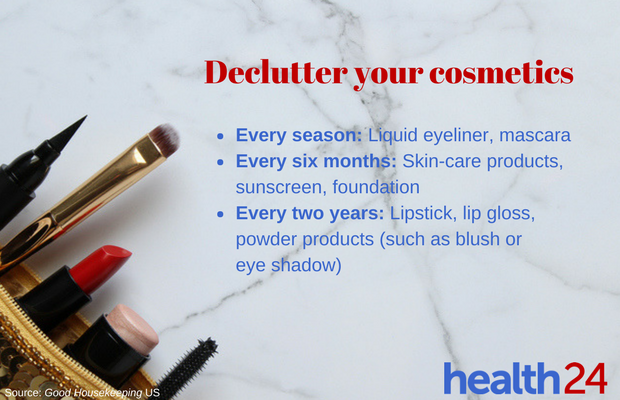Health24.com | What nasty fungi may be lurking inside your makeup bag?
You might be concerned about getting harmful substances into your body through the food you eat, but what about the products you put directly onto your skin?
Have you ever wondered about how hygienic your makeup bag is? Truth be told, it can be a perfect breeding ground for bacteria and germs.
According to the Food and Drug Administration of the USA (FDA), it is a fact that microorganisms can grow and reproduce in cosmetics. While we don’t ingest cosmetic products, these microorganisms can still wreak havoc with our health.
In 2015, a 27-year-old Australian woman became paralysed after she contracted an MRSA (Methicillin-resistant Staphylococcus aureus) infection in her spine. The culprit? A makeup brush she borrowed from a friend. The brush was contaminated with the Staphylococcus bacteria, which caused MRSA, a dangerous, antibiotic-resistant strain.
What makes makeup risky?
But how can these colourful, fragrant, sparkly products be so dangerous?
It’s simple. Not only does the waxy, creamy, moist consistency of some cosmetic products make the perfect place for bacteria and fungi to grow, but your “beauty tools”, such as brushes and sponges, also contribute to the problem. Your makeup brushes come into contact with your skin on a daily basis, transferring bacteria living on your skin into your cosmetics, and vice versa.
What exactly is lurking in your cosmetic products?
Research on a variety of personal toiletries and beauty equipment has shown that Bacillus, Staphylococcus spp., Pseudomonas spp., Enterobacter, Aspergillus, Penicillium and Candida are the predominant species found in cosmetics.
The same study surveyed products and tools used in salons and by makeup artists. The predominant bacteria in these were Streptococcus spp., Staphylococcus spp., Escherichia coli, Citrobacter freundi, Klebsiella, Enterobacter and Pseudomonas aeruginosa, and also fungi like Aspergillus and Penicillium.
Why are these dangerous?
These nasties lurking in your makeup can cause a host of infections ranging from mild to severe, including:
How product contamination happens
A study published in the journal Health Promotion Perspectives investigated the reasons why cosmetic products are often contaminated by bacteria and fungi and came across three main reasons:
1. Unsterile, raw products are used as ingredients, with not enough stabilising preservatives such as parabens.
2. During the course of the manufacturing process, hygiene standards may be compromised.
3. After purchase, cosmetics are opened and exposed to air and the skin.
Another big problem that causes serious skin infections is the trafficking of counterfeit cosmetic products. This is a major problem in many countries, as there are no safety regulations or standardisation of ingredients, which compromises the safety of these products.

Keep your cosmetics clean:
Tempted to throw all your makeup away after reading this? Don’t. There are a few ways you can keep your cosmetic products clean:
- Always check the expiration dates.
- Throw your product away as soon as it develops a strange smell or changes texture.
- Clean your beauty equipment such as brushes, tweezers and eyelash curlers weekly, especially if you had a skin breakout or eye infection.
- Don’t share your beauty products.
- Only make use of credible makeup artists who regularly sanitise their products.
- Don’t buy counterfeit makeup – even though the price tag might be appealing, these counterfeit brands are not subject to regulation processes and you might be exposed to harmful chemicals and dubious hygiene standards.
Image credit: iStock

